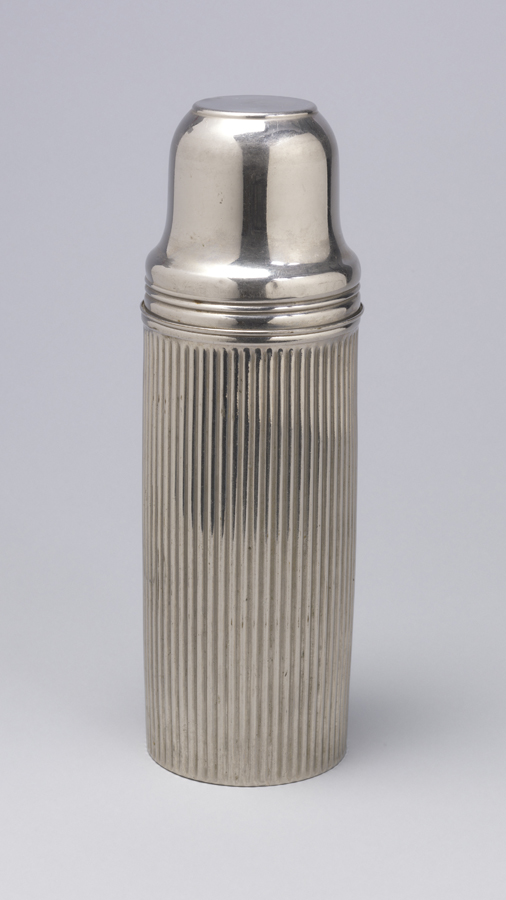Near the end of the nineteenth century, Scottish scientist Sir James Dewar developed glass vacuum bottle technology for his work with liquid gases. The bottle had a function applicable to daily life as well–keeping beverages fresh, meeting a basic need as more people joined the work force, taking meals to their jobs. More people were also traveling for recreation, and by the early twentieth century and the advent of the automobile, road trips and travel to outdoor destinations became leisure-time activities within reach of a growing middle class. Portable vacuum bottles were among the new technologies of the time. Derived from a scientific tool and adapted for consumer use and a modern lifestyle, vacuum flasks made it possible for travelers to carry their own cold or hot drinks maintained at the desired temperature, available at a moment’s notice.
In 1904, two German glass blowers formed a company to produce the first commercial vacuum flask. The name Thermos came about when they held a contest to name their product and someone submitted the term”thermos,” derived from the Greek word therme, meaning hot. In 1907, the U.S-based American Thermos Bottle Co. secured rights to the German technology and trade name. At least one other American company, Landers Frary and Clark, the maker of this example, started producing their own vacuum bottles, making improvements and applying for patents. As early as the 1890s, Landers adopted the trade name “Universal” for its product lines of small household appliances and vacuum bottles and flasks.
This ca. 1917 “Universal” vacuum flask reflects simple functionality in its columnar form, the metal body embellished only by fluting that also serves as a functional ‘non-slip’ surface. The screw-on cap protects the bottle stopper and does double duty as a drinking cup. Ultimately, Landers Frary and Clark’s competitor, The Thermos Co., had better marketing savvy, and has survived to this day. In 1965, Landers was acquired by the General Electric Company.
Cynthia Trope is the Associate Curator of Product Design and Decorative Arts at Cooper Hewitt, Smithsonian Design Museum.
